Today marks the start of a new term in Queensland, although most states and territories have at least another week of holidays, if not more. It’s always hard to get back into the swing of things in the 3rd term, with winter cold and the usual round of flus and sniffles. OpenSTEM’s 3rd term units branch into new areas to provide some fresh material and a new direction for the new semester. This term younger students are studying the lives of children in the past from a narrative context, whilst older students are delving into aspects of Australian history.
 Foundation/Prep/Kindy to Year 3
Foundation/Prep/Kindy to Year 3
The main resource for our youngest students for Unit F.3 is Children in the Past – a collection of stories of children from a range of different historical situations. This resource contains 6 stories of children from Aboriginal Australia more than 1,000 years ago, Ancient Egypt, Ancient Rome, Ancient China, Aztec Mexico and Zulu Southern Africa several hundred years ago. Teachers can choose one or two stories from this resource to study in depth with the students this term. The range of stories allows teachers to tailor the material to their class and ensure that there is no need to repeat the same stories in consecutive years. Students will compare the lives of children in the stories with their own lives – focusing on different aspects in different weeks of the term. In this first week teachers will read the stories to the class and help them find the places described on the OpenSTEM “Our World” map and/or a globe.
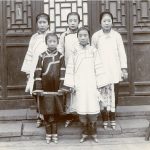 Students in integrated Foundation/Prep/Kindy and Year 1 classes (Unit F-1.3), will also be examining stories from the Children in the Past resource. Students in Years 1 (Unit 1.3), 2 (Unit 2.3) and 3 (Unit 3.3) will also be comparing their own lives with those of children in the past; however, they will use a collection of stories called Living in the Past, which covers the same areas and time periods as Children in the Past, but provides more in-depth information about a broader range of subject areas and includes the story of the young Tom Petrie, growing up in Brisbane in the 1840s. Students in Year 1 will be considering family structures and the differences and similarities between their own families and the families described in the stories. Students in Year 2 are starting to understand the differences which technology makes to peoples’ lives, especially the technology behind different modes of transport. Students in Year 3 retain a focus on local history. In fact, the Understanding Our World® units for Year 3, term 3 are tailored to match the capital city of the state or territory in which the student lives. Currently units are available for Brisbane and Perth, other capital cities are in preparation. Additional resources are available describing the foundation and growth of Brisbane and Perth, with other cities to follow. Teachers may also prefer to focus on the local community in a smaller town and substitute their own resources for those of the capital city.
Students in integrated Foundation/Prep/Kindy and Year 1 classes (Unit F-1.3), will also be examining stories from the Children in the Past resource. Students in Years 1 (Unit 1.3), 2 (Unit 2.3) and 3 (Unit 3.3) will also be comparing their own lives with those of children in the past; however, they will use a collection of stories called Living in the Past, which covers the same areas and time periods as Children in the Past, but provides more in-depth information about a broader range of subject areas and includes the story of the young Tom Petrie, growing up in Brisbane in the 1840s. Students in Year 1 will be considering family structures and the differences and similarities between their own families and the families described in the stories. Students in Year 2 are starting to understand the differences which technology makes to peoples’ lives, especially the technology behind different modes of transport. Students in Year 3 retain a focus on local history. In fact, the Understanding Our World® units for Year 3, term 3 are tailored to match the capital city of the state or territory in which the student lives. Currently units are available for Brisbane and Perth, other capital cities are in preparation. Additional resources are available describing the foundation and growth of Brisbane and Perth, with other cities to follow. Teachers may also prefer to focus on the local community in a smaller town and substitute their own resources for those of the capital city.
Years 3 to 6

Older students are focusing on Australian history this term – Year 3 students (Unit 3.7) will be considering the history of their capital city (or local community) within the broader context of Australian history. Students in Year 4 (Unit 4.3) will be examining Australia in the period up to and including the first half of the 19th century. Students in Year 5 (Unit 5.3) examine the colonial period in Australian history; whilst students in Year 6 (Unit 6.3) are investigating Federation and Australia in the 20th century. In this first week of term, students in Years 3 to 6 will be compiling a timeline of Australian history and filling in important events which they already know about or have learnt about in previous units. Students will revisit this timeline in later weeks to add additional information. The main resources for this week are The History of Australia, a broad overview of Australian history from the Ice Age to the 20th century; and the History of Australian Democracy, an overview of the development of the democratic process in Australia.
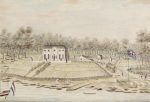 The rest of the 3rd term will be spent compiling a scientific report on an investigation into an aspect of Australian history. Students in Year 3 will choose a research topic from a list of themes concerning the history of their capital city. Students in Year 4 will choose from themes on Australia before 1788, the First Fleet, experiences of convicts and settlers, including children, as well as the impact of different animals brought to Australia during the colonial period. Students in Year 5 will choose from themes on the Australian colonies and people including explorers, convicts and settlers, massacres and resistance, colonial animals and industries such as sugar in Queensland. Students in Year 6 will choose from themes on Federation, including personalities such as Henry Parkes and Edmund Barton, Sport, Women’s Suffrage, Children, the Boer War and Aboriginal experiences. This research topic will be undertaken as a guided investigation throughout the term.
The rest of the 3rd term will be spent compiling a scientific report on an investigation into an aspect of Australian history. Students in Year 3 will choose a research topic from a list of themes concerning the history of their capital city. Students in Year 4 will choose from themes on Australia before 1788, the First Fleet, experiences of convicts and settlers, including children, as well as the impact of different animals brought to Australia during the colonial period. Students in Year 5 will choose from themes on the Australian colonies and people including explorers, convicts and settlers, massacres and resistance, colonial animals and industries such as sugar in Queensland. Students in Year 6 will choose from themes on Federation, including personalities such as Henry Parkes and Edmund Barton, Sport, Women’s Suffrage, Children, the Boer War and Aboriginal experiences. This research topic will be undertaken as a guided investigation throughout the term.

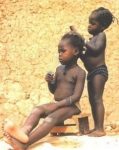 Foundation/Prep/Kindy to Year 3
Foundation/Prep/Kindy to Year 3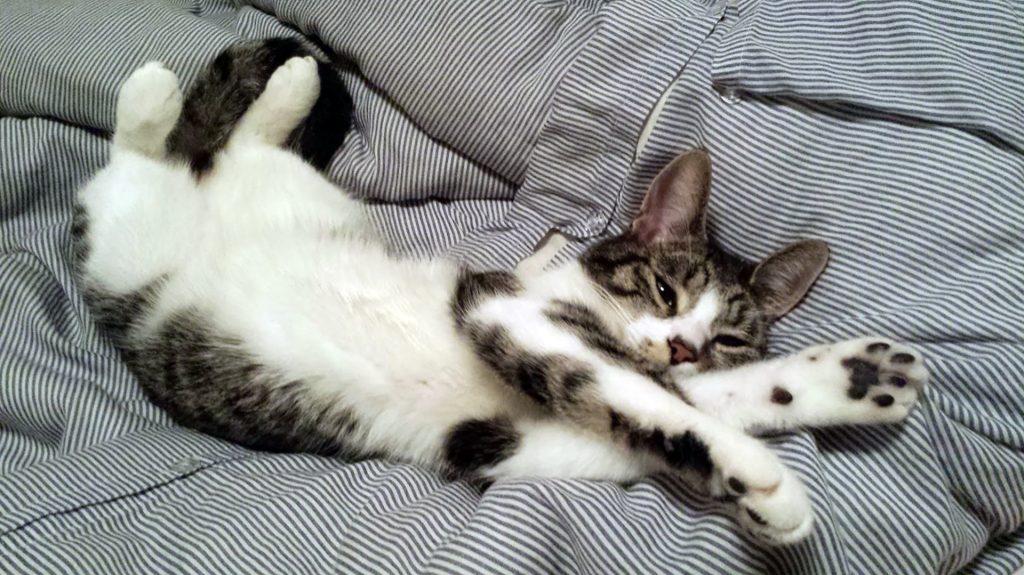 Ah, the comfortable cat! Most people agree that cats are experts at being comfortable and getting the best out of life, with the assistance of their human friends – but how did this come about?
Ah, the comfortable cat! Most people agree that cats are experts at being comfortable and getting the best out of life, with the assistance of their human friends – but how did this come about? 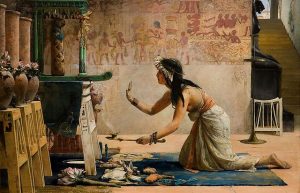 Many people know that the Ancient Egyptians came to certain agreements with cats – cats are depicted in some of their art and mummified cats have been found. It is believed that cats may have been worshipped as representatives of the Cat Goddess, Bastet – interestingly enough, a goddess of war! Statues of cats from Ancient Egypt emphasise their regal bearing and tendency towards supercilious expressions. Cats were present in Egyptian art by 1950 B.C. and it was long thought that Egyptians were the first to domesticate the cat. However, in 2004 a cat was found buried with a human on the island of Cyprus in the Mediterranean 9,500 years ago, making it the earliest known cat associated with humans. This date was many thousands of years earlier than Egyptian cats. In 2008 a site in the Nile Valley was found which contained the remains of 6 cats – a male, a female and 4 kittens, which seemed to have been cared for by people about 6,000 years ago.
Many people know that the Ancient Egyptians came to certain agreements with cats – cats are depicted in some of their art and mummified cats have been found. It is believed that cats may have been worshipped as representatives of the Cat Goddess, Bastet – interestingly enough, a goddess of war! Statues of cats from Ancient Egypt emphasise their regal bearing and tendency towards supercilious expressions. Cats were present in Egyptian art by 1950 B.C. and it was long thought that Egyptians were the first to domesticate the cat. However, in 2004 a cat was found buried with a human on the island of Cyprus in the Mediterranean 9,500 years ago, making it the earliest known cat associated with humans. This date was many thousands of years earlier than Egyptian cats. In 2008 a site in the Nile Valley was found which contained the remains of 6 cats – a male, a female and 4 kittens, which seemed to have been cared for by people about 6,000 years ago.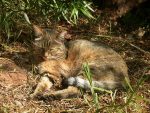
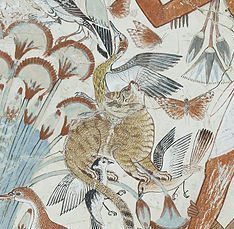
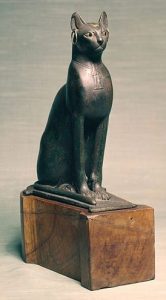 In our homes we form the social group, which may include one or more cats. If there is more than one cat these may subdivide themselves into cliques or factions. Pairs of cats raised together often remain closely bonded and affectionate for life. Other cats (especially males) may isolate themselves from the group and do not want to interact with other cats. Cats that are happy on their own do not need other cats for company. It is more common to find stressed cats in multi-cat households. Cats will tolerate other cats best if they are introduced when young. After 2 years of age cats are less tolerant of newcomers to the group. Humans take the place of parents in their cats’ lives. Cats who grow up with humans retain some psychological traits from kittenhood and never achieve full psychological maturity.
In our homes we form the social group, which may include one or more cats. If there is more than one cat these may subdivide themselves into cliques or factions. Pairs of cats raised together often remain closely bonded and affectionate for life. Other cats (especially males) may isolate themselves from the group and do not want to interact with other cats. Cats that are happy on their own do not need other cats for company. It is more common to find stressed cats in multi-cat households. Cats will tolerate other cats best if they are introduced when young. After 2 years of age cats are less tolerant of newcomers to the group. Humans take the place of parents in their cats’ lives. Cats who grow up with humans retain some psychological traits from kittenhood and never achieve full psychological maturity.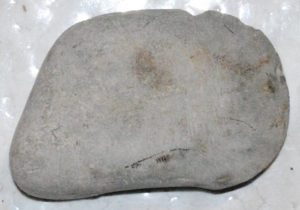



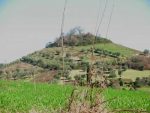

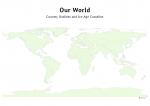

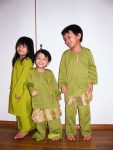
My grade 4 son played this with me a few times, his feedback was it was too easy but fun,…
Brad